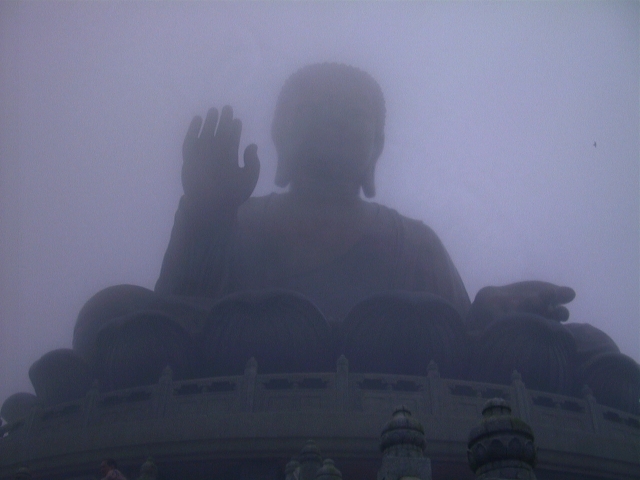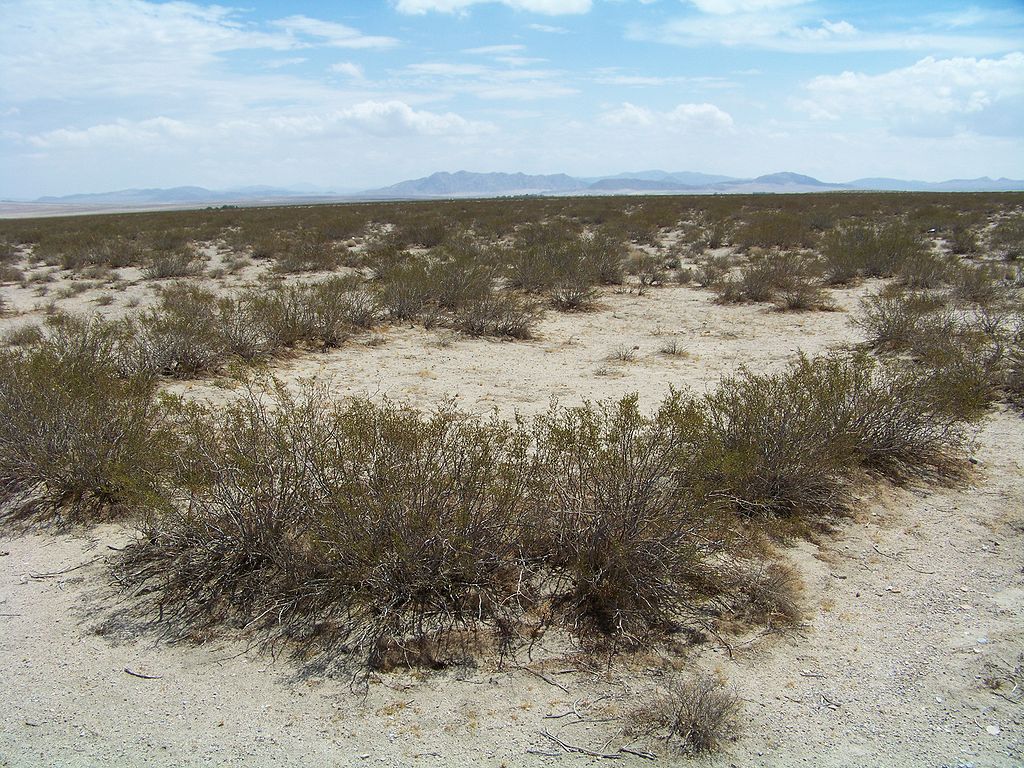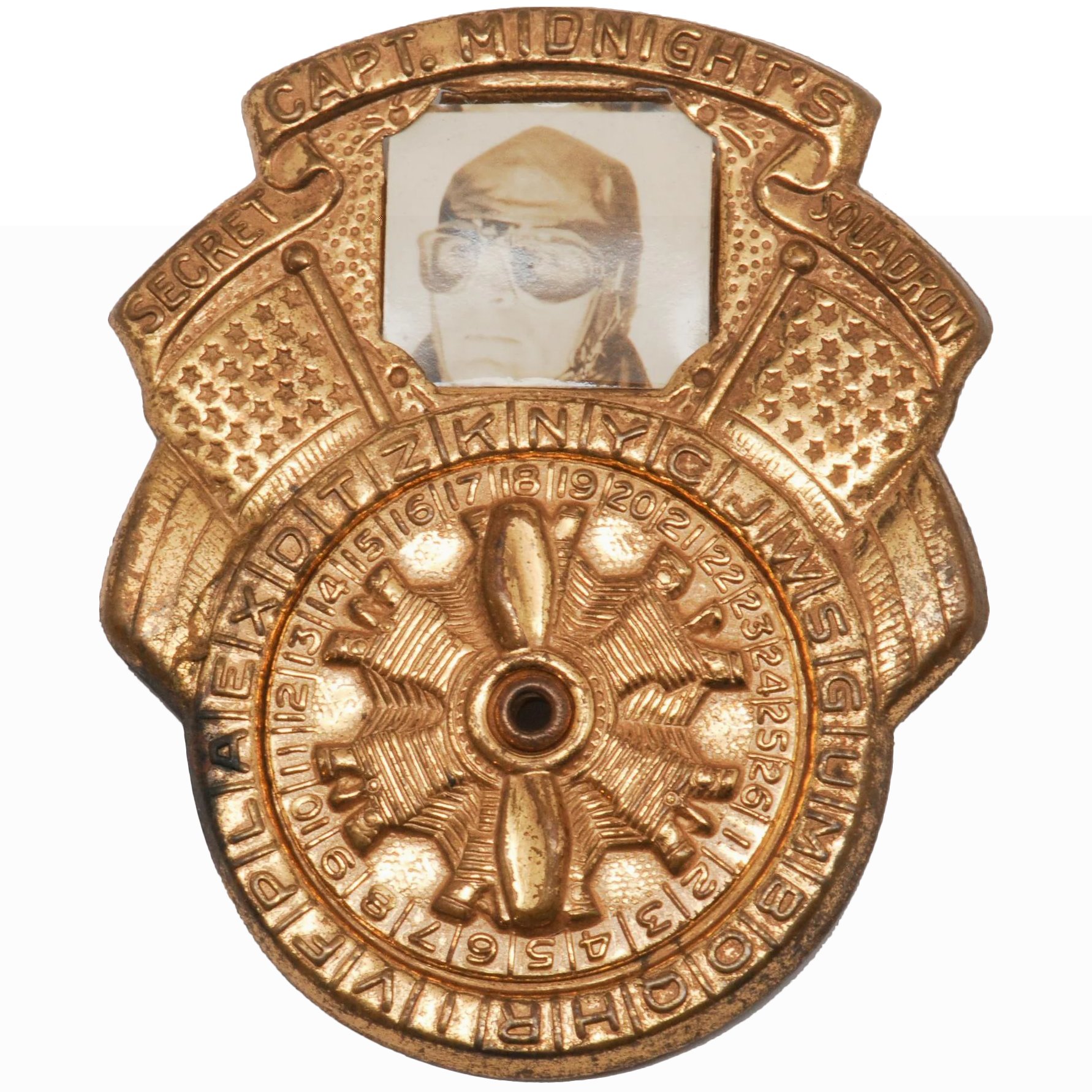
I.) THE FUTURE BUDDHA MADE GREAT STRUGGLE
AND HIS BODY BECAME EMACIATED

II.) THE FUTURE BUDDHA RECEIVING THE
MILK-PORRIDGE OFFERED BY SUJATA
FIRST VERSION
From the day the Great Being had gone forth from the household life until the day depicted in this picture, six years had elapsed. Here he has resumed eating normal food and his body has returned to a normal state. This day was the fifteenth of the waxing moon of the sixth lunar month, 45 years before the Buddha's passing away [parinibbana]. The lady offering things to the Great Being in the picture is Sujata. She was the daughter of a householder in a village in Uruvela Senanigama. She is offering a dish of Rice Gruel with Milk [madhupayasa], rice cooked with pure cow's milk. It was a vegetarian food, containing no meat or fish, used especially as an offering to deities.
The Pathamasambodhi states that Sujata had made a prayer to the deity of a certain banyan tree for a husband of equal status and for a son by him. When she had obtained what she wished for, she cooked the milk rice as an offering in thanks. Before the day she was to cook the rice, Sujata had some of her servants lead the herd of 1,000 cows to a forest of licorice grass so that the cows could eat their fill. Then she divided them into two herds of 500 head each, and milked the 500 cows of one herd and fed that milk to the 500 cows of the other herd. She then continued to divide that herd and feed half on the milk of the other half until there were only eight cows left. She then took the milk from those eight cows to make her milk rice.
When the rice was cooked, Sujata sent a servant girl to clean up the area around the banyan tree. The servant girl came back to Sujata with a report that the deity [deva] who was to receive the offerings had materialized, and was already sitting at the foot of the banyan tree. Excited, Sujata lifted the tray of milk rice to her head and carried it to the banyan tree, together with her servant girl. Seeing that it was as her servant had told her, she came forward and proffered the tray of milk rice. The Great Being received it and looked at Sujata. She understood from his look that he had no bowl or any other dish with which to eat the food, and so she made an offering of both the rice and the dish.
Having offered the rice, she walked back to her house, full of happiness, believing that she had made offerings to a deva.
SEE:
A SECOND VERSION:
Early on the full moon day of Kason (April) in the year 103 of the Great Era, i.e. 2551 years ago, counting back from the year 1324 of the Burmese Era, the now emaciated prince sat down under the Bo Tree near the big village of Senanigăma awaiting the hour of going for alms food. At that time, Sujătă, the daughter of a rich man from the village, was making preparations to give an offering to the tree-spirit of the Bo tree. She sent her maid ahead to tidy up the area under the spread of the holy tree. At the sight of the starving man seated under the tree, the maid thought the deity had made himself visible to receive their offering in person. She ran back in great excitement to inform her mistress.
Sujătă put the milk rice which she had cooked early in the morning in a golden bowl worth a hundred thousand pieces of money. She covered the same with another golden bowl. She then proceeded with the bowls to the foot of the banyan tree where the prince remained seated and put the bowls in the hand of the soon to be Great Bodhisattva, saying, "May your wishes prosper like mine have." So saying, she departed.
Sujătă, on becoming a maiden, had made a prayer at the banyan tree: "If I get a husband of equal rank and same caste with myself and my first born is a son, I will make an offering." Her prayer had been fulfilled and her offering of milk rice that day was intended for the tree deity in fulfillment of her pledge. However, later when she learned that the Bodhisattva had overcome the powers of Mara and gained Enlightenment after taking the milk rice offered by her, she was overjoyed with the thought that she had made a noble deed to the greatest merit.
A THIRD VERSION
His body had been tortured by the elements, and he was dangerously underweight. A farm girl passing by offered him milk-gruel. It was a mysterious event. Reverently taking the milk-gruel to his lips, he at once was taken back by his state of mind. ("What could this feeling be?") The taste of the delicious milk, his joy, gratitude, and deep emotion all began flooding him. It left him speechless. That instant his suffering heart caused by the Great Doubt had been cut off. He had never experienced anything like it before. He was full and satisfied. He had failed to notice this heart (hridaya) before. It didn't exist during his ascetic practices. It was his first such experience. He had touched upon the beginning of a new world. (Still, where could that refreshed, satisfied feeling have arisen from? What is this thing called Self and Anatta, the concept of no-self? And how can he resolve his original doubts?)
Here Shakyamuni noticed the mysterious workings of the mind: "What is the make up of this mind that makes me suffer, and feel delight alike? Even if one wrestles with the question of his own death or the Death of the Ego, isn't it a matter of the mind itself?" These doubts intensified. Investigating the mind like this is the beginning of Zen. His practice until this time had been unfocused. Instantenously things arose in the mind then disappeared. Things excited the mind, which the mind then amplified. Examining this happening, he realized the unlimited depth and power of the mind itself. And this is where he started focusing his attention. In introspection, he realized that punishing one's body will not temper or toughen the mind, and ascetic practices will not resolve his doubts.

THE BODHI TREE AS IT APPEARS TODAY, THE FOURTH
DIRECT DESCENDANT OF THE ORIGINAL BODHI TREE
AND OLDEST DOCUMENTED TREE IN THE WORLD. [1]


Fundamentally, our experience as experienced is not different from the Zen master's. Where
we differ is that we place a fog, a particular kind of conceptual overlay onto that experience
and then make an emotional investment in that overlay, taking it to be "real" in and of itself.

|

Buddha illustrations courtesy of the Dharma and The Illustrated History of Buddhism
MADHUPAYASA MADHU=Honey; PAYASA=Milk-Rice
Many of the world's ancient and current words for honey seem to
have a common origin:
According to the Mahavamsa, the ancient chronicle written in Pali around the 5th century BCE and its sequel, the Chulavamsa, a variety of rice dishes were known in ancient times. Two sorts of cooked rice (Pali: bhatta) were consumed, namely yagu (rice gruel) and payasa (milk-rice). Another kind of sweet rice, dadhibhatta, prepared with curdled milk was also known.
Rice was also prepared as a sweet dish with various ingredients such as sugar (phanita), honey (madhu) and butter (sappi). Savoury rice dishes with oil (tela) were also known. The Chulavamsa records that King Silameghavanna (7th century) entertained the Buddhist clergy with milk-rice made with butter and syrup. An exquisite savoury dish comprised of rice prepared with the milk of the king coconut (sannira) and butter and fine spices (supehi). Black pepper (maricha), long pepper (pipphali), garlic (lasuna), ginger (singivera) and the three kinds of the medicinal myrobalan fruits (tiphalani), namely Amalaka (Emblica officinalis), Hari-taka (Terminalia chebula) and Akkha (T. belerica), were used as spices. Well intentioned beliefs or not, the Bodhi Tree that exists today is NOT the exact same tree that shaded the Buddha 2,500 years ago. However, most authorities on the subject agree that it is a direct descendent of the original.
In the 3rd century BC, Emperor Asoka's daughter Sanghamitta removed a viable branch from the Bodhi Tree and took it to Sri Lanka. There she planted it in Anuradhapura, where it is still growing today. According to tradition, the wife of Emperor Asoka destroyed the original Bodhi Tree out of jealousy because of the amount of time he spent there.
Other accounts say the original tree was destroyed in the 7th century. Whether either story is the right one or not, most experts agree that the original tree had been destroyed at one time or the other and that the present day tree is an offspring of the tree planted in Sri Lanka.
There is a tree, a bristlecone pine high in the mountains along the California-Nevada border that has been given the name "Methuselah" by it's discoverers because of it's extreme age. It was 4,789 years old when sampled circa 1957 by Edmund Schulman and Tom Harlan. The tree, which has an estimated germination date of 2832 BC, is considered the oldest known living tree and non-clonal organism in the world — as of 2012, 4844–4845 years old.
When the Wanderling was a boy around 11 or 12 years old he was taken by his uncle to meet a man of great spiritual attainment by the name Franklin Merrell-Wolff who lived in an isolated compound along the eastern slopes of the High Sierras. Twenty years later the Wanderling was on a road trip with his uncle in of which included a stop once again at Merrell-Wolff's. However, even though the Wanderling was traveling with his uncle he opted out going to Merrill-Wolff's. Instead he requested he be left off near Big Pine and from there he went to the White Mountains somewhat east of Merrell-Wolff's to seek solitude at the 10,000 foot level and meditate among the ancient bristlecone pines and at the base of the 48 century old Methuselah Tree just for the heck of it. The Wanderling writes:
"I knew about the bristlecone pines because during one of those 1949 or 1950 summers that we were camping in the High Sierras a Forest Ranger named Al Noren, who operated south of us in Inyo county came into our camp in Mono county --- on unofficial business --- looking for my uncle, having heard he had a strong reputation for being a rather successful biosearcher. Noren took us to a grove of the ancient trees growing around the 10,000 foot level in the White Mountains, telling us many trees were over 4000 years old. There he showed us a huge bristlecone he called or named the Patriarch Tree, which eventually turned out to be largest bristlecone pine known. The same strand of trees or a similar one nearby was eventually named the Methuselah Grove because of the ancient age of the bristlecone pines that make up the grove. We returned to camp and went back to swimming in the creek, collecting arrowheads, and living off the land for the rest of the summer. A couple of years later, in 1953, Noren contacted Edmund Schulman, a bigtime dendrochronologist at the University of Arizona and showed him the same stuff he showed my uncle. Schulman, who died in 1958, has gone on to be given credit as the one who discovered that bristlecone pines are the oldest trees in the world."
For more on the Wanderling, the bristlecone pines and Franklin Merrell-Wolff see:
A few paragraphs back, about the Methuselah Tree, I write the tree, which has an estimated germination date of 2832 BC, is considered the oldest known living tree and non-clonal organism in the world. There is a living plant organism that far surpasses the age of the Methuselah Tree --- the loop-hole in the statement being the term "non-clonal organism." That non-clonal organism is called King Clone:
When I was a young boy I was found wandering out in the middle of the Mojave Desert all alone by an old man desert rat type of a prospector along Old Woman Springs Road located down and behind the mountains from Big Bear Lake on the high desert floor. The old prospector noticed what he thought was an unusual group of vultures circling in the thermals. To him they didn't seem to be zeroing in on an unmoving carcass of some kind, but moving their circle as though following something possibly injured but still alive. Reading the signs of the desert like a book and using his intuition as much as his curiosity, the old man turned north on a dirt road that led toward the old Bessemer iron mine thinking he might be able to get closer and get a better look. When he reached a point about even with the general eastward movement of the vultures he pulled over to the side of the road and standing up on the seats of his top down jeep peered out over the desert with binoculars to see if he could see anything. Sure enough, visually sweeping the area under the vulture's circle through his binoculars he saw some distance off the road what looked like and turned out to be, a young boy all by himself out in the middle of nowhere walking along almost if he had no clue as to where he was or what he was doing. However, the old man as he told the story, such was not the case. It was as though the boy knew exactly what he was doing, but why he was doing it was a mystery.
What the old man thought was, if the boy was following the vultures with them acting as guides or they were following his lead it didn't seem to matter as the young boy walked straight to and into, only to then sit down in the middle of, one of the most unusual features in all of the Mojave Desert, a creosote ring. But not any creosote ring the old man said, but a specific one, with a huge diameter the likes of which he had never seen. By all description and location, without knowing it, the young boy had walked to, selected out, and sat down in the middle of what, after it's discovery 30 or 40 years later, turned out to be, and has since been given the name King Clone, the oldest known living thing on Earth, dated as being over 11,700 years old. The boy was me, the Wanderling, as presented in the following source:
Notice in the circular line drawing below the pole star for our era, Polaris, is placed at the very top center of the precession orbit while curiously enough, of all the stars that could be, straight down and directly below, Vega just happens to be at the very bottom center, one half way away in the 26,000 year precession cycle.
Vega was the northern pole star around 12,000 BC and will be so again around the year 13,727. The creosote ring is dated as being over 11,700 years old, which for all practical purposes is 12,000 years, making it's very inception on earth beginning during the exact same period of time Vega was the north star. During my meditation periods on the monastery grounds outside and in front of the doors prior to any passing through into the monastery, the nighttime sky north star was Polaris, indicating a present day time frame reference. After passing through the monastery doors and exiting outside and around to the front, the nighttime north star was Vega, indicating a time frame reference around 12,000 BC, just at the end of the ice age ... OR in the future as stated above 13,727 AD, making for the creosote ring (and just as important) one full 26,000 year circumnavigation of the precession of the equinox.
Sanskrit - madhu
Chinese - myit
Indo-European - mit
Slavic - medhu
English - mead
Spanish - miel
FOOTNOTE [1]

(please click)
FRANKLIN MERRELL-WOLFF

KING CLONE, THE OLDEST LIVING THING KNOWN ON THE PLANET, A MOJAVE
DESERT CREOSOTE RING DATED AS BEING WELL BEYOND 11,700 YEARS OLD
(please click image)
MAGIC OF THE MOJAVE DESERT CREOSOTE RING
PRECESSION OF THE EQUINOX AND THE CODE-O-GRAPHS
 -----
-----
RESTITCHING THE HOLE IN THE FABRIC OF SPACE-TIME